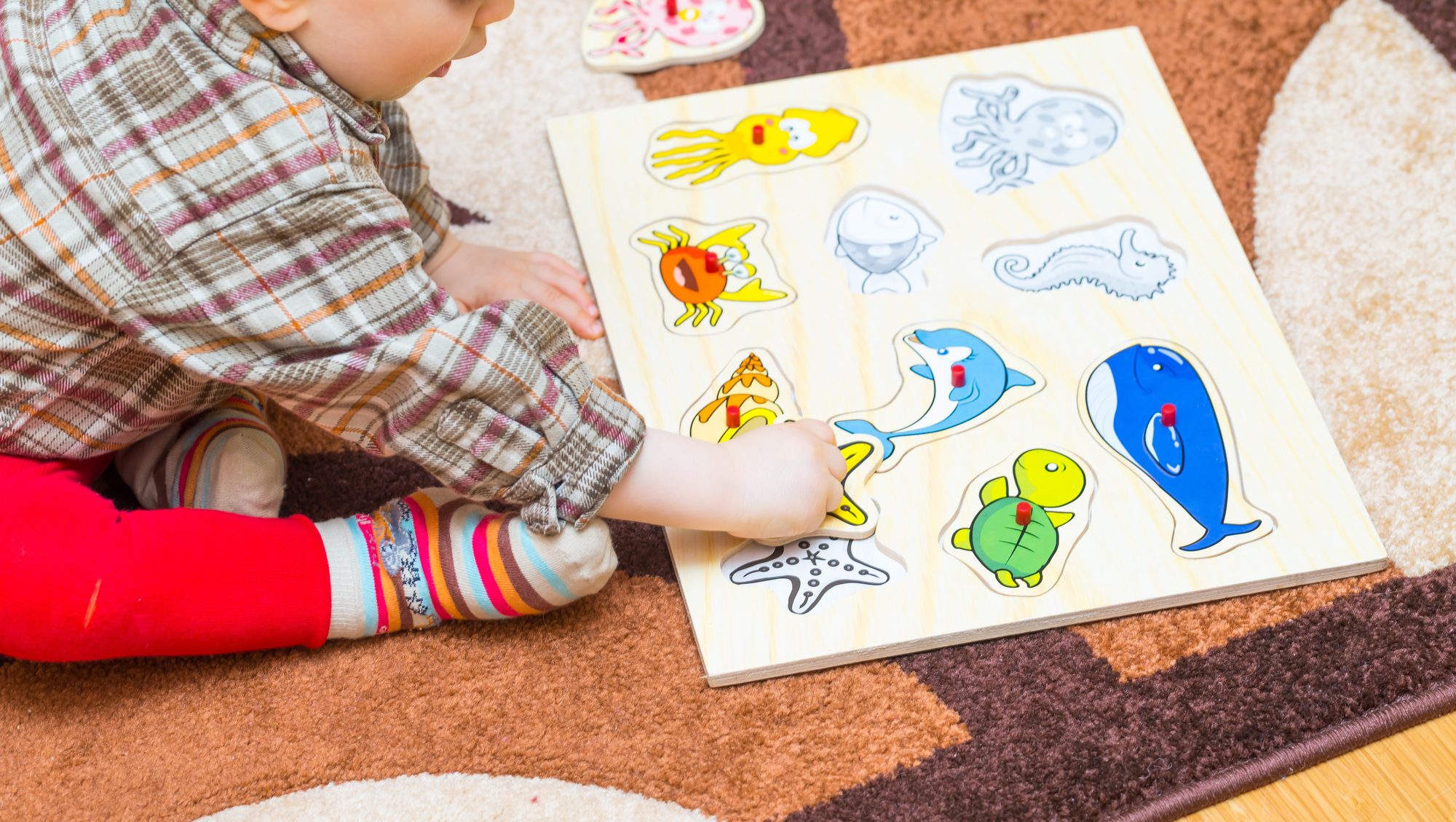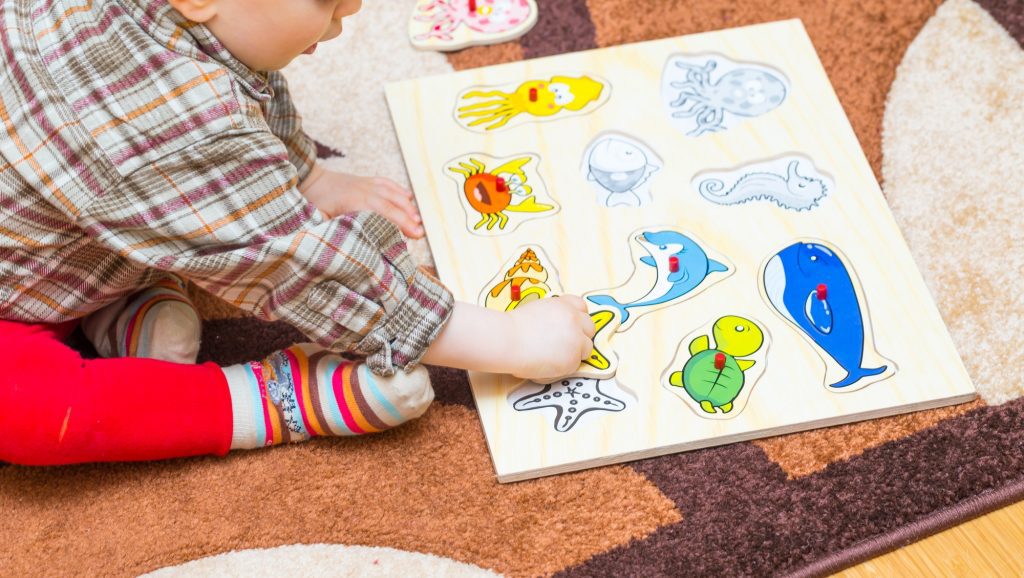
28 Mar How Montessori materials build “controls of error” into each activity.
Montessori classroom materials have built-in controls that let the child know when they have performed the activity correctly. “Control of error” is a design feature that allows the material itself to give feedback, letting the child know when they have performed the activity correctly. The solution to the activity becomes apparent as soon as the work is complete, reducing the need for external control (such as a teacher) telling them if they’ve done it wrong or not.
The materials are designed to be self-correcting, giving the child greater independence to solve a problem. In a work like the knobbed cylinders, for instance, the child must place different sized wooden cylinders into a block with corresponding shaped holes. If the block doesn’t fit, the child knows to try a bigger hole. If there is a cylinder left over without a matching hole, the child realizes that one of the other cylinders must be in the wrong hole. The child then must go back and correct the problem. The fact that the child discovers the error by herself and finds the solution without the teacher to guide them boosts the child’s confidence and self-determination.

Making Self Correcting Materials At Home
Anything you can add to the material that your child can use to check their answers and receive immediate feedback is control of error. Any activity or puzzle can be made to be self-correcting, such as flashcards or a matching game with color-coded marks on the back, or a cards and counters number game that has exactly 55 counters–so that if any counters are left over, there’s been a mistake. One advantage of incorporating self-correcting materials is that there is no ambiguity, and they don’t hear a grown-up telling them, “No, that’s wrong.”
This is yet another way that Montessori provides opportunities for a child to proudly say, “I figured it out all by myself!”


Sorry, the comment form is closed at this time.